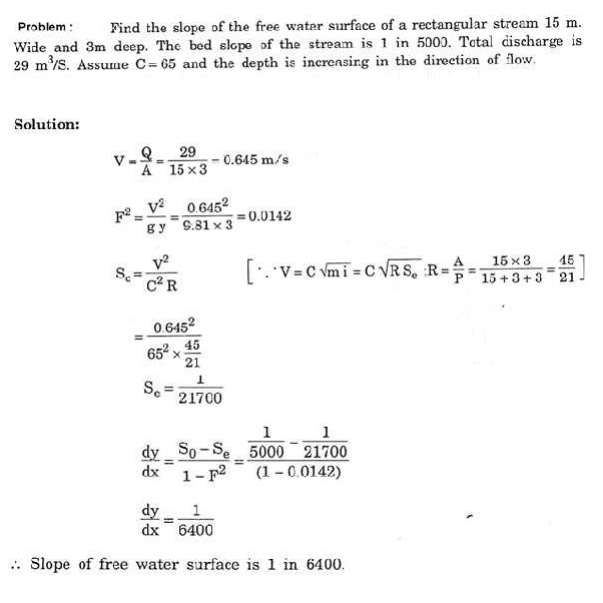Chapter: civil : Applied Hydraulic Engineering: Rapidly Varied Flow
Hydraulic jump
Hydraulic jump
A hydraulic jump is a phenomenon
in the science of hydraulics which is frequently observed in open channel flow
such as rivers and spillways. When liquid at high velocity discharges into a
zone of lower velocity, a rather abrupt rise occurs in the liquid surface. The
rapidly flowing liquid is abruptly slowed and increases in height, converting
some of the flow's initial kinetic energy into an increase in potential energy,
with some energy irreversibly lost through turbulence to heat. In an open
channel flow, this manifests as the fast flow rapidly slowing and piling up on
top of itself similar to how a shockwave forms.
1 Expression for Hydraulic Jump
Y2 =y1 (1+ 8(F1)2)1/2 - 1
Where Y1 = depth of flow at
section 1-1
Y2 = depth of flow at
section 2-2
F1 = Froude number at
section 1-1
2 Loss of Energy due to HydraulicJump
h1 = y2-y13
/ 4y1y2
Where Y1 = depth of flow at
section 1-1
Y2 = depth of flow at
section 2-2
3 Uses of Hydraulic Jump
The kinetic energy of flow after the hydraulic
jump is greatly reduced, which may prevent erosion of the channel boundaries of
downstream side.
4 Classification of Hydraulic Jumps
Based on
Froude number (F), hydraulic jump can be classified into 5 types.
a. Undulation
jump: The Froude number F ranges from 1 to1.7 and the liquid surface does not
rise shortly but having undulations of radically decreasing size.
b. Weak
jump: The Froude number F ranges from1.7 to 2.5 and the liquid surface remains
smooth.
c. Oscillating
jump: The Froude number F ranges from 2.5 to 4.5 and there is an oscillating
jet which enters the jump bottom and oscillating to the surface.
d. Steady
jump: The Froude number F ranges from 4.5 to9 and energy loss due to steady
jump in between 45 and 70%.
Strong
jump: The Froude number greater than 9 and the downstream water surface is
rough. Energy loss due to strong jump may be up to 85%.

Related Topics